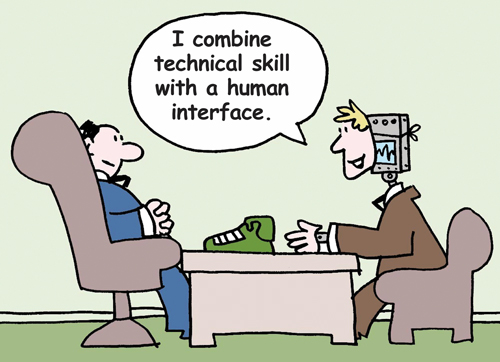Will Smart Robots Automate OSP Maintenance?
By Ray Thomas
The time has come for the use of robotics and artificial intelligence (AI) to maintain the outside coaxial cable network. Robotics technology has developed well beyond what would be required for a product that is specialized for cable outside plant (OSP) maintenance. Artificial intelligence is also well advanced and capable of guiding an autonomous robotic unit, which we shall refer to as the “OSP-bot.”
What is the starting point for justifying development of an OSP-bot? There are thousands upon thousands of kilometers of coaxial cable in service in many countries around the world. All those miles of coaxial cable are aging and develop cracks and loose RF fittings that emit unwanted signal leakage. System operators are not able to hire new field techs at a quick enough rate to keep up with the loss of field techs that are retiring or leaving for other pursuits, which means a widening gap in plant maintenance.
What are some of the design characteristics of the OSP-bot? The OSP-bot would need to be designed with physical dimensions and weight that would allow it to “crawl” along the top of the strand that supports the actual coaxial hardline cable. It would have a long tubular shape that would resemble lashing machines. The OSP-bot would need to be self-powered and capable of crawling along the aerial cable for days and even weeks at a time on its own. One possibility would be having a bank of solar cells all over the top of the OSP-bot so that it could recharge during the day and then do its work at night. The OSP-bot would have an outer cover to protect it from contact with high voltage lines.
What maintenance work could the OSP-bot perform? It would have near-field radio frequency sensors to detect signal leakage at points in the coax where it is broken. Each point of leakage would be logged with precise latitude and longitude coordinates. In addition to finding the exact location of leaks, an OSP-bot equipped with fully articulated robotic arms could make temporary repairs to the coax to stop the leakage. Advanced repair capabilities could enable the OSP-bot to make permanent repairs to the outer sheath conductor of the coax. Even more impressive would be the capability to perform a full splice to the coax, including the center conductor and aluminum outer sheath.
All signal leakage points in the coax and/or repairs would be logged and reported wirelessly to the operator. Logs could be aggregated during the course of a 24-hour period and reported accordingly. A unique advantage of the OSP-bot using near-field RF detection is that it can find hairline radial cracks in jacketed coaxial cable that are hidden by the jacketing material.
 The OSP-bot could also be programmed and equipped to repair broken lashing wire. Broken lashing wire in back easements and over roads and highways can be difficult for techs to access. An OSP-bot that carried the required parts could take over this tedious job and free up technicians for more important work throughout the network. Imagine a single OSP-bot working around the clock repairing signal leakage as well as fixing broken lashing wire.
The OSP-bot could also be programmed and equipped to repair broken lashing wire. Broken lashing wire in back easements and over roads and highways can be difficult for techs to access. An OSP-bot that carried the required parts could take over this tedious job and free up technicians for more important work throughout the network. Imagine a single OSP-bot working around the clock repairing signal leakage as well as fixing broken lashing wire.
The OSP-bot could also be programmed to check the tightness of each coaxial RF connection it encountered on its path and would tighten each coax fitting to the exact torque specified by the manufacturer.
This article barely scratches the surface of the capabilities of the OSP-bot. Cable operators that deployed a fleet of robots to maintain aerial outside plant would enjoy a leap forward in the reliability of their networks and their customers would benefit from the advanced maintenance performed around the clock by machines that never stop making the networks better. OSP-bots would truly put the word “proactive” into the term proactive network maintenance.
 Ray Thomas
Ray Thomas
Owner, Kiama Tech, LLC
Ray@KiamaTech.com
Ray worked at five different cable operators including the corporate engineering groups at Time Warner Cable and Comcast over a 30-year period in a wide range of roles. He is currently an author and consultant at Kiama Tech, LLC.
Credit: Cartoonstock.com

